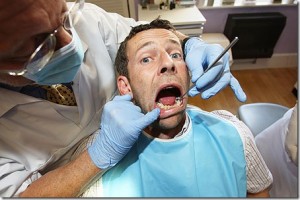 To fill or not to fill; that is the question. To cave to the dentist chair, or succumb to the cavity and forever hold your peace. Well the choice is yours. But we are here to give you all the facts you need to make an educated decision.
To fill or not to fill; that is the question. To cave to the dentist chair, or succumb to the cavity and forever hold your peace. Well the choice is yours. But we are here to give you all the facts you need to make an educated decision.
A cavity, also known as tooth decay, occurs when the structure of the enamel is damaged. When the bacteria in the mouth reacts with sugar and starch from the food we eat, thin white film known as plaque form on our teeth. With poor oral hygiene, plaque will be harbored by bacteria that form acids. As the plaque continue to stick, the acid will consume the enamel of your teeth, forming a cavity or a hole around the surface.
But how does one detect a cavity early on?
 1. Pain
1. Pain
The first way to detect a cavity is tooth pain. If you feel a distinct achey-ness around the tooth, without distinctively triggering it, this is a sign that the nerves have been infected by bacteria or an irritant. If you experience a stabbing pain when chewing down on food, this is also a sign that you may have a cavity.
 2. Sensitivity
2. Sensitivity
Teeth with cavities provoke a high level of sensitivity. Sensitivity to sweets and sugars is usually an early indicator of cavities. This kind of sensitivity usually resembles a tingling feeling. If your teeth suddenly develop temperature sensitivity, this may also be an indicator of cavities.
 3. Bad Breath
3. Bad Breath
There are several factors that can cause bad breath, but cavities are one of them. If you suddenly find that you are experiencing bad breath, yet you practice good oral hygiene, you may be developing cavities.
 4. Dark Spots Or Hole In Tooth
4. Dark Spots Or Hole In Tooth
If you see either of these in your mouth, it is crucial that you check with your doctor immediately. A dark spot or hole in a tooth means that your enamel has been eroded. It is important to check with your dentist to establish if the dark spot is due to teeth decay.
